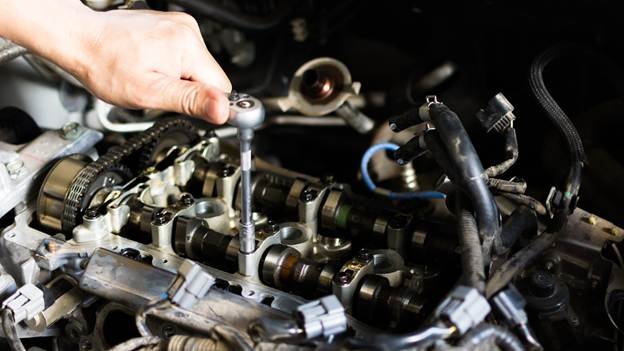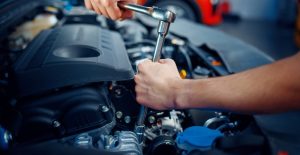When your engine is tired, the fork in the road is familiar: rebuild or replace. Swapping in a crate motor sounds clean and quick, but it isn’t always the smartest path—especially for off-road rigs with unique gearing, accessories, or emissions realities. Here are thirteen scenarios where rebuilding shines—and a few when replacement is the better play.
1. You Have a Solid Core
If your block isn’t cracked, the crank is salvageable, and there’s no catastrophic window in the pan, a rebuild lets you refresh rings, bearings, seals, and valvetrain while keeping your known-good core. You retain factory fitment and avoid mystery history from used take-outs.
2. Matching Emissions & Registration
Vintage or state-specific emissions equipment can turn a replacement into a paperwork maze. Rebuilding the original engine keeps the emissions family and calibration intact, smoothing inspections and annual tests.
3. Known Baseline, Known Quirks
You already know how your motor behaves—hot idle oil pressure, cold-start manners, and the noises it makes. A rebuild preserves that familiarity while addressing wear. With a replacement, you inherit someone else’s surprises.
4. Budget Control with Targeted Upgrades
A rebuild can be staged: machine work and rotating assembly first, then cam/heads or oiling improvements later. Replacement demands big spend up front. Rebuilds also let you direct money into problem areas (e.g., improved rod bolts, better head gaskets) rather than paying for a complete long block you don’t need.
5. Scarce or Specialty Engines
For certain platforms—older diesels, unique trims, or rare import mills—crate options are limited or wildly expensive. Rebuilding your unicorn may be the only realistic route, and it keeps the rig authentic.
6. Better Than Stock, On Purpose
A rebuild is your chance to fix factory compromises: address oiling, cooling passages, piston design, or weak valvetrain components. Blueprinting tolerances, balancing the rotating assembly, and improving ring packs can yield cooler, quieter, longer-lasting performance than the engine ever had new.
7. Accessory and Fitment Confidence
Motor mounts, accessory brackets, front dress, and sensor locations vary across years and submodels. Rebuilding your original avoids “this nearly fits” adventures that explode timelines and budgets.
8. Towing or Trail Specific Tuning
With a rebuild, compression ratio, cam timing, and piston coatings can be chosen for sustained grades, high altitude, or low-speed crawling. You build exactly the torque curve your rig needs instead of accepting a one-size-fits-most crate calibration.
9. Lead Times and Supply Chain Reality
Crate engines can be backordered for months; used engines of unknown condition come with shipping risk and limited recourse. Machine shops often deliver faster—and you end up with a zero-hour bottom end you trust.
10. Resale Story That Buyers Believe
A binder of machine invoices, clearances, photos, and parts lists reads better than “used engine, unknown miles.” Proper documentation helps future buyers (and lenders/insurers) value the truck appropriately.
11. Environmental and Ethical Angle
Keeping your block and major components in service reduces material waste. For some owners, that matters as much as the mechanical outcome.
12. Compatibility with Existing Tune
If your rig is already professionally calibrated, a rebuild to the same spec avoids a ground-up retune. Minor adjustments beat chasing gremlins from a different injector size or combustion chamber shape.
13. Preventive Shot While You’re “In There”
Timing chains, oil pumps, water pumps, and sensors are all accessible during a rebuild. Bundling them now avoids paying labor twice and sets you up for reliable miles.
When Replacement Wins
- Catastrophic Block Damage: A cracked or windowed block, spun mains that destroyed saddles, or severe corrosion can make machining uneconomical. Replacement or a good used short block is the sane choice
- Time Is Truly of the Essence: If your rig must be back in service immediately and a correct, warrantied crate is on the shelf, replacement minimizes downtime. A reputable installer plus a known-good long block can beat even a fast machine schedule.
- Major Platform Upgrade Goals: If you’re chasing modern power density, emissions, or efficiency—say, moving from a tired small block to a new-generation engine with integrated management—replacement aligns better with your endgame.
- Unknown Maintenance History + Low-Cost Take-Out: Sometimes a verified low-mile pull with compression/leak-down results and warranty is cheaper than machining, parts, and assembly. Just ensure the math includes installation, adapters, and tuning.
Cost, Risk, and Longevity—How to Decide
- Diagnose First: Compression, leak-down, oil analysis, and borescope views establish whether your core is rebuildable.
- Get Two Quotes: One for a full rebuild (machine + parts + assembly), another for a drop-in replacement (including all adapters, tuning, fluids, and incidentals).
- Consider Use Case: Heavy towing, high altitude, and crawling favor custom rebuild specs; casual street use can justify a straightforward replacement.
- Model Total Ownership: Include break-in oil changes, coolant, belts/hoses, mounts, and retunes. A cheaper option on paper may cost more by the time it’s road-tested.
- Document Everything: Whether you rebuild or replace, keep invoices, clearances, torque records, and photos. Good records protect value and simplify future service.
In many off-road builds, a well-executed rebuild delivers the best mix of control, fitment, and longevity. You keep your known-good core, tailor internals to the terrain, and start fresh with zero-hour wear—without the packaging roulette of a different engine family. Replacement still has its moments—chiefly when the block is beyond saving or when a platform upgrade is the project’s purpose. Either way, approaching the decision with testing, full-stack budgeting, and meticulous documentation will keep your rig reliable long after the first heat cycle. That’s the essence of smart, durable 4×4 engine maintenance—choosing the path that fits how and where you drive, and executing it without compromise.






More Stories
How Brand New Car Leasing in Singapore Improves Earnings for Private Hire Drivers
ok.com’s Free Model: Easing Cost Pressures in US Job Search, Home Hunting, Car Buying, and More
Essential Guide to Car Servicing in Singapore for Every Driver